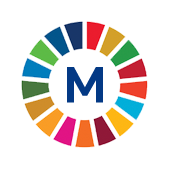 4.2.1 Early child development index, by sexMetadataPeriod: Every four yearsYear: 2025 |
 4.2.1 Early child development index, by sexMetadataPeriod: Every four yearsYear: 2025 |
| METADATA |
| Indicator information |
| Definition and methodology |
| Data source type and data collection method |
| Notes |
| ID of global indicator |
| Metadata update |
| Global metadata |
| Indicator information | Top |
| Indicator | |
4.2.1 Early child development index, by sex | |
| Global indicator name | |
4.2.1 Proportion of children aged 24–59 months who are developmentally on track in health, learning and psychosocial well-being, by sex | |
| Target | |
4.2 By 2030, ensure that all girls and boys have access to quality early childhood development, care and pre-primary education so that they are ready for primary education | |
| Goal | |
Goal 4. Ensure inclusive and equitable quality education and promote lifelong learning opportunities for all | |
| Definition and methodology | Top |
| Definition | |
Percentage of children age 36-59 months who are developmentally on track in at least three of the following four domains: literacy-numeracy, physical, social-emotional, and learning. | |
| Methodological explanations | |
A 10-item module was used to calculate the Early Child Development Index (ECDI). The primary purpose of the ECDI is to inform public policy regarding the developmental status of children in Serbia. The index is based on selected milestones that children are expected to achieve by ages 3 and 4. The 10 items are used to determine if children are developmentally on track in four domains: - Literacy-numeracy: Children are identified as being developmentally on track based on whether they can identify/name at least ten letters of the alphabet, whether they can read at least four simple, popular words, and whether they know the name and recognize the symbols of all numbers from 1 to 10. If at least two of these are true, then the child is considered developmentally on track;- Physical: If the child can pick up a small object with two fingers, like a stick or a rock from the ground and/or the mother/caretaker does not indicate that the child is sometimes too sick to play, then the child is regarded as being developmentally on track in the physical domain;- Social-emotional: Children are considered to be developmentally on track if two of the following are true: If the child gets along well with other children, if the child does not kick, bite, or hit other children and if the child does not get distracted easily;- Learning: If the child follows simple directions on how to do something correctly and/or when given something to do, is able to do it independently, then the child is considered to be developmentally on track in this domain; ECDI is then calculated as the percentage of children who are developmentally on track in at least three of these four domains. The results are presented in Table CD.5.
MICS 6: https://www.stat.gov.rs/media/5611/mics6_izvestaj_srbija.pdf | |
| Method of calculation | |
The number of children aged 24 to 59 months who are developmentally on track for their age in terms of health, learning, and psychosocial well-being divided by the total number of children aged 24 to 59 months in the population, multiplied by 100. | |
| Unit of measure | |
% | |
| Available disaggregation | |
Gender | |
| Territorial level | |
Republic of Serbia | |
| Data source type and data collection method | Top |
| Data source | |
Multiple Indicator Cluster Survey (MICS) | |
| Periodicity of data collection | |
Every four years | |
| Notes | Top |
The last available data are from 2019, when the last MICS survey was conducted in the Republic of Serbia. | |
| ID of global indicator | Top |
C040201 | |
| Metadata update | Top |
| 30/5/2025 | |
| Global metadata | Top |
https://unstats.un.org/sdgs/metadata/files/Metadata-04-02-01.pdf | |